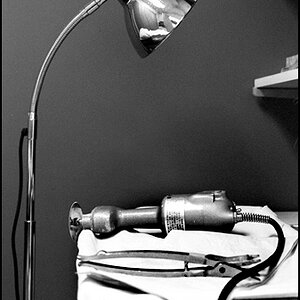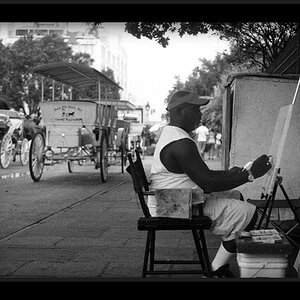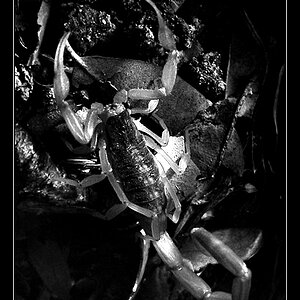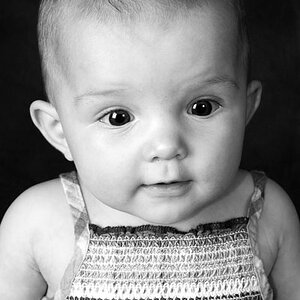- Joined
- Jun 2, 2013
- Messages
- 4,493
- Reaction score
- 4,141
A couple of days ago I bought a sync cable for a flash unit that had previously been donated to my house's "community studio cabinet"; up until now I have only been able to use the modeling lamp on the flash unit because there was nothing to sync it with a camera. Yesterday I decided to go to the camera store and just get a sync cable since I have been the only one in the house using the equipment anyways. I know radio triggers are a better option and investment, but I couldn't argue with a $15 price tag on the cable and can't really justify spending too much money right now.
The flash unit is a Neewer C-300 with a rectangular softbox attached. Shot on a Canon 5D with a Canon 100mm f/2.8 Macro USM lens attached set to f/8, 1/250th sec, ISO 100.

The flash unit is a Neewer C-300 with a rectangular softbox attached. Shot on a Canon 5D with a Canon 100mm f/2.8 Macro USM lens attached set to f/8, 1/250th sec, ISO 100.




![[No title]](/data/xfmg/thumbnail/39/39532-073f9eb14e26e2b99cc29112b92a2ab6.jpg?1619739072)
![[No title]](/data/xfmg/thumbnail/42/42023-bdd979ff50e78cc28479297780caeb90.jpg?1619739981)



![[No title]](/data/xfmg/thumbnail/39/39533-c2c39d37e833a4689533c897ace8c348.jpg?1619739073)


![[No title]](/data/xfmg/thumbnail/42/42019-e6f4e7422d2f8ec66dade714c8b21766.jpg?1619739979)
